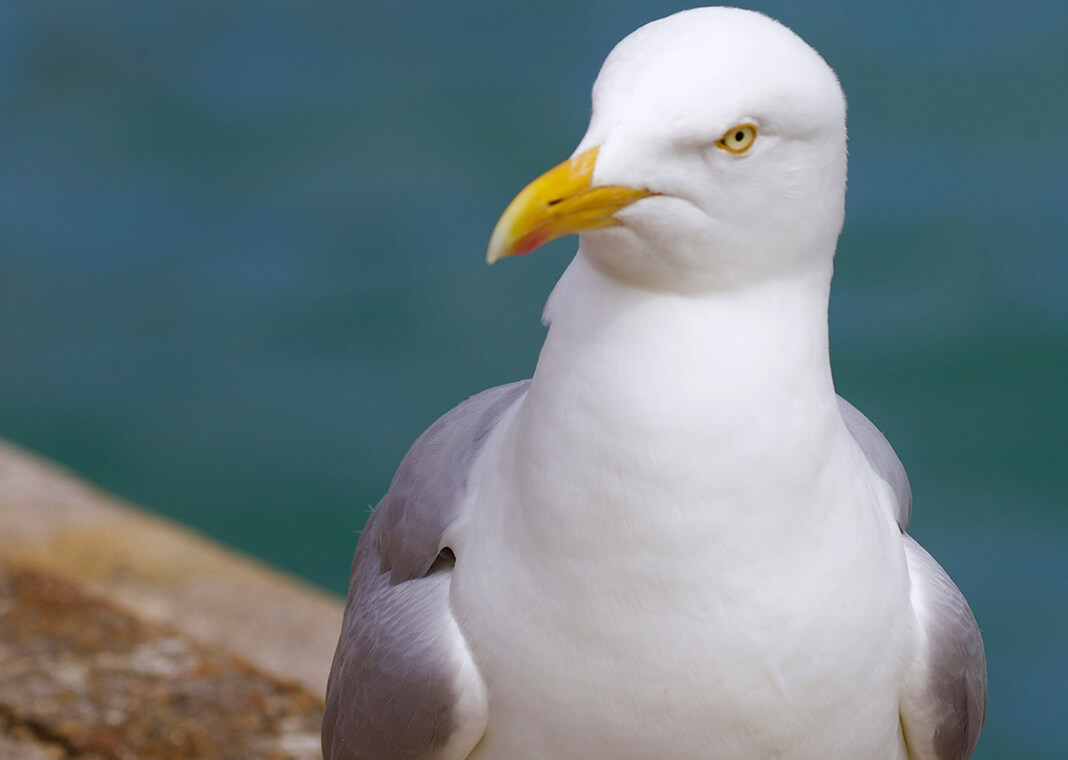
I sit with a Jesuit friend on a pier near a fishing village overlooking the Irish Sea. The village, Howth, is a 30-minute or so drive northeast of Dublin. It’s a lovely night: cool and breezy, with the smell of salt and seaweed wafting over the ocean wall. It’s busy too. Along the pier are tourists and locals walking, talking, fishing, and taking in the staggering beauty of the seaside views. Fr. Brendan and I sit on a pair of large rocks and eat our fish and chips, watching it all.
We’d seen a rainbow earlier that evening: a sweeping arc of color and magic that stretched from the nearby cliffs all the way into the sea in a glittery dissipation of glimmering hues. If ever a rainbow were going to lead to a leprechaun’s treasure trove, this was the one. I’d assumed that was the most interesting thing we’d see that night.
I was wrong.
As we dunk our fish into a garlic sauce made mostly of mayonnaise, we notice a pair of young fishermen—fisherboys?—approaching a seagull. They seem concerned about it, though it’s the sort of concern that tween boys of any culture display via jokes and jibes and a handful of issued challenges that begin with, “I betcha can’t.”
Brendan and I and a growing number of Spanish tourists turn our attention to the boys and their bird, worried.
“It’s got a line caught in its beak,” Brendan says.
“That’s why it’s not flying away,” I say. Plus the bird is clearly tired. It must know that any hope it has of survival rests in the humans on that pier.
The boys and the bird continue their haphazard dance. It’s uncertain whether these boys are responsible for the seagull’s plight, but it is becoming increasingly clear that they aren’t going to be able to solve the problem.
Then another character appears. He’s a guy, maybe in his 20s, an apparent veteran of fishing on this pier. He leaps into the fray, shooing the boys away, and pulls forth his own fishing pole. A second man, a buddy of the first, comes around to help him.
“Hold him down,” the first man says. He gets on top of the bird and presses its neck down gently with the pole. His friend holds the pole in place, and the first man goes to work extracting the hook. The seagull hops away in somewhat better spirits.
But the leg!
“There’s another hook,” Brendan says. The seagull saviors seem to realize that around the same time; they repeat their surgical procedure. The bird is now free of wayward hooks, and the two newcomers turn their attention to fishing. The Spanish tour group leaves, impressed, and Brendan tosses the newly freed seagull a French fry.
“I wonder if he’s done that before,” I say. “He was so quick about it, like a professional.” Brendan agrees.
But the more I think about this experience, the more I wonder: How many opportunities does a person really have to extract not one but two fishing hooks from a seagull? Enough times to have a methodology? That can’t be right.
There’s a difference between the sort of person who is an expert at disentangling trapped seagulls and the sort of person who is willing to step up and give it a shot. I think we encountered the second sort. And I think that second sort is, in fact, much more impressive.
In our own vocations, we tend to spend time wondering if we’ve made all the right choices, studied all the right things, completed enough certificates, or done enough push-ups. Those are all good and valuable things upon which to reflect. But sometimes they become obstacles. At least, they do for me. Oh, I can’t do that. I don’t have the skills, the experience, the insights, or the title.
That’s OK. God wants us to show up to the moment and respond as best we’re able.
There’s no one in the world who has completed a certificate or holds a title of “Seagull Untangler.” But that guy did it. That guy saw a need and acted, as best he could.
Let’s pray that each of us, in our own ways and places, becomes more like that second sort of person, the sort who is, buoyed by God’s Spirit, willing to step up and give it a shot—all for the greater glory of God.
Photo by James Wainscoat on Unsplash.
